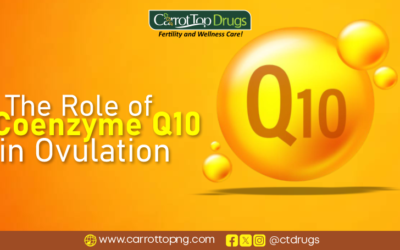Introduction
The first trimester is the period that spans the first 12 weeks of pregnancy. It is a crucial period marked by rapid development and growth. However, unfortunately, it’s during this time that some pregnancies may face an unexpected end, called first trimester miscarriages. As we address this topic, we aim to shed some light on this matter, especially for those couples struggling with this challenge.
Understanding First Trimester Miscarriages
Definition and Explanation:
First trimester miscarriages refer to the loss of a pregnancy within the initial 12 weeks of gestation. This crucial period marks the early stages of fetal development, where the foundation for a healthy pregnancy is laid. Unfortunately, first trimester miscarriages interrupt this process, resulting in the loss of the developing fetus. These losses can transpire due to a variety of reasons. Some are from genetic abnormalities in the fetus to underlying health conditions in the expectant mother. Understanding the complex interplay of factors that can lead to a first trimester miscarriage is vital for individuals and couples who find themselves grappling with this heart-wrenching experience.
Common Causes:
First trimester miscarriages are often attributed to a multitude of factors, highlighting the intricate nature of early pregnancy.
Genetic Abnormalities
Genetic abnormalities in the fetus represent a significant cause of first trimester miscarriages. These abnormalities manifest when there are alterations or errors in the chromosomes, the fundamental units of genetic information. Any disruptions in the proper chromosomal structure can severely affect the development and viability of the fetus during the initial stages of pregnancy, ultimately leading to a first trimester miscarriage. Understanding and addressing these genetic irregularities is crucial in comprehending and mitigating the occurrence of first trimester miscarriages.
Hormonal Imbalances
Hormonal imbalances, particularly those involving progesterone and estrogen, play a pivotal role in first trimester miscarriages. These hormones are vital for establishing and maintaining a conducive environment for the fetus to develop and grow during the initial stages of pregnancy. An imbalance in these hormones can disrupt the delicate equilibrium required for a successful pregnancy, resulting in complications and ultimately leading to a first trimester miscarriage. Addressing hormonal imbalances and ensuring the appropriate levels of these hormones is essential in preventing and minimizing the risk of first trimester miscarriages.
Structural Abnormalities
Structural abnormalities within the uterus or cervix can pose significant challenges to a developing fetus, often culminating in first trimester miscarriages. These structural irregularities can impede proper fetal development and prevent a healthy pregnancy progression. Conditions such as uterine fibroids, uterine septum, or cervical incompetence can adversely impact the implantation and growth of the fetus, ultimately leading to a first trimester miscarriage. Recognizing and addressing these structural concerns through appropriate medical interventions is crucial in reducing the likelihood of experiencing a first trimester miscarriage.
Recognizing the Signs and Symptoms
Physical Symptoms:
First trimester miscarriages are often accompanied by noticeable physical symptoms that can alert individuals to seek medical attention promptly. Vaginal bleeding is a primary physical symptom associated with first trimester miscarriages. This bleeding can vary in intensity, ranging from light spotting to heavy bleeding, and is typically accompanied by abdominal cramping. The presence of tissue or clots passing through the vagina is another significant indicator of a potential miscarriage during the first trimester. Recognizing and understanding these physical symptoms is crucial for early detection and appropriate medical intervention, emphasizing the importance of proactive healthcare during this critical period.
In addition to vaginal bleeding and tissue passage, other physical signs during the first trimester may also point to a potential miscarriage. Monitoring any unusual discharge is essential, as it can provide valuable information regarding the health of the pregnancy. Furthermore, abrupt cessation of typical pregnancy symptoms, such as breast tenderness or morning sickness, can be an alarming sign. These changes in physical symptoms should not be ignored, and seeking immediate medical attention for a comprehensive assessment and guidance becomes paramount to ensure the best possible outcomes during a challenging time of potential first trimester miscarriages.
When experiencing symptoms such as vaginal bleeding, tissue passing, unusual discharge, or a sudden halt in pregnancy-related symptoms, prompt medical evaluation is critical.
Emotional Impact:
Beyond the physical manifestations, the emotional impact of a first trimester miscarriage can be profound and enduring. The emotional toll on individuals and couples experiencing a miscarriage during this critical period of pregnancy can be overwhelming. Feelings of grief, loss, guilt, sadness, and even anger are common emotional responses. It’s vital to acknowledge and validate these emotions, seeking support from healthcare professionals, counselors, or support groups to navigate through the grieving process. Understanding and addressing the emotional impact is a critical aspect of recovering and healing from the distressing experience of first trimester miscarriages.
Medical Evaluation and Diagnosis
Diagnostic Procedures:
When facing the distressing possibility of first trimester miscarriages, seeking a prompt and thorough medical evaluation is crucial. A variety of diagnostic procedures may be employed to assess the situation accurately. These could include transvaginal ultrasounds to monitor the development of the fetus and detect any abnormalities, blood tests to measure hormone levels and identify potential issues, or chromosomal analysis of fetal tissues after a miscarriage to ascertain genetic factors. These diagnostic approaches aid healthcare professionals in understanding the underlying causes of first trimester miscarriages, allowing for appropriate guidance and potential preventive strategies for future pregnancies.
Medical Consultations:
In the face of a suspected first trimester miscarriage, seeking timely medical consultations is vital. Healthcare professionals specializing in obstetrics and gynecology play a crucial role in guiding individuals and couples through this challenging period. During these consultations, medical history is discussed, physical examinations are conducted, and diagnostic tests are ordered as needed.
These consultations provide a platform for open communication, enabling patients to ask questions, express concerns, and gain valuable insights into their situation. The information garnered from these consultations paves the way for informed decisions regarding subsequent steps and possible treatments after a first trimester miscarriage.
Risk Factors and Prevention
Identifying Potential Risk Factors:
Understanding the potential risk factors associated with first trimester miscarriages is crucial for informed decision-making and proactive management. Various factors may contribute to an increased risk of experiencing a first trimester miscarriage.
Advanced Maternal Age:
Advanced maternal age, typically defined as being 35 years or older at the time of pregnancy, is a significant risk factor.
Other factors include:
- a history of previous miscarriages,
- underlying medical conditions like diabetes or autoimmune disorders,
- hormonal imbalances,
- uterine abnormalities,
- and lifestyle choices such as smoking, excessive alcohol consumption, or illicit drug use.
By identifying these risk factors, individuals and healthcare professionals can work together to develop strategies to mitigate risks and enhance the chances of a successful pregnancy.
Preventive Measures Against First Trimester Miscarriages
Preventive measures are fundamental in reducing the risk of first trimester miscarriages and promoting a healthy pregnancy. While not all miscarriages can be prevented, certain proactive steps can significantly enhance the likelihood of a successful pregnancy. Here are essential preventive measures:
Regular Prenatal Care:
Attending regular prenatal check-ups allows healthcare providers to monitor the progress of the pregnancy, identify potential issues early, and provide appropriate guidance for a healthy pregnancy.
Healthy Lifestyle Choices:
Maintaining a healthy lifestyle before and during pregnancy is crucial. This includes eating a balanced diet rich in vitamins and minerals, engaging in regular exercise, avoiding smoking, alcohol, and illicit drugs, and managing stress through relaxation techniques.
Also, we recommend the use of supplements like our Natal Care Plus for pregnant mothers. It also has omega-3 fatty acids. This is to ensure that you have the necessary nutrients in the optimum quantity.
Manage Pre-existing Medical Conditions:
If you have pre-existing medical conditions such as diabetes, thyroid disorders, or hypertension, work closely with your healthcare team to manage these conditions effectively. Well-controlled medical conditions contribute to a healthier pregnancy.
Genetic Counseling and Testing:
If there’s a family history of genetic disorders or you have experienced recurrent miscarriages, consider genetic counseling and testing. Understanding potential genetic risks can guide informed decisions and appropriate medical care.
Proper Weight Management:
Maintaining a healthy weight before and during pregnancy is essential. Being underweight or overweight can increase the risk of first trimester miscarriages and other complications. Consult a healthcare provider for personalized weight management recommendations.
Avoid Environmental Hazards:
Minimize exposure to harmful environmental factors like toxic chemicals, radiation, or certain medications that could potentially harm the developing fetus.
Stay Hydrated and Monitor Medications:
Stay adequately hydrated and only take medications prescribed or approved by your healthcare provider. Certain medications can pose risks during pregnancy and should be avoided.
Understand Your Body:
Be attuned to your body and any unusual symptoms. If you experience any concerning symptoms such as vaginal bleeding, severe abdominal pain, or a sudden decrease in pregnancy symptoms, contact your healthcare provider immediately.
Preconception Care:
If planning a pregnancy, consider preconception care. This involves consulting with a healthcare provider to optimize your health before conceiving, addressing any potential risk factors, and ensuring you’re in the best possible health for a successful pregnancy.
Medical Treatments and Options
Medical Interventions Available:
In addressing first trimester miscarriages, medical interventions are available to manage the physical aspect of the loss and ensure the well-being of the individual. These interventions are designed to help the body complete the natural process of expelling fetal tissue.
Medications: One commonly used medical intervention is the administration of medication, often a combination of misoprostol and mifepristone, which aids in the gentle expulsion of the remaining tissue from the uterus. This approach is non-invasive and can be carried out in the comfort of one’s home under medical supervision.
Procedures and Treatments:
When medication alone may not suffice, medical procedures may be recommended.
Dilation and Curettage
The physician performs Dilation and curettage (D&C) to remove any remaining fetal tissue from the uterus. During a D&C, the cervix is dilated, and the tissue is gently suctioned or scraped away. Another option is dilation and aspiration, a similar procedure involving the removal of tissue through suction. The physician does this proceducure in an healthcare facility and under. It is relatively safe and effective in managing the aftermath of first trimester miscarriages. Healthcare providers carefully consider an individual’s specific situation to determine the most suitable medical approach, ensuring both physical and emotional well-being during this challenging time.
Moving Forward: Trying Again
Guidance for Couples:
After experiencing the heartache of first trimester miscarriages, moving forward and considering trying again can be a complex decision for couples. Seeking guidance and support from healthcare professionals is crucial during this phase. Open communication with an obstetrician or gynecologist can provide valuable insights into the potential causes of the miscarriage and recommendations for a healthy and successful pregnancy moving forward. Healthcare providers can offer personalized advice, suggest appropriate timelines for attempting to conceive again, and recommend any necessary medical evaluations or interventions to increase the chances of a successful pregnancy.
Emotional Considerations:
Addressing the emotional aspects of trying again after a first trimester miscarriage is equally important. Couples may experience a range of emotions, including anxiety, fear, and lingering grief from the previous loss. It’s essential to acknowledge and communicate these feelings openly with each other.
Seeking emotional support from mental health professionals or support groups specialized in assisting those who have faced first trimester miscarriages can provide coping strategies and guidance. Creating a supportive environment that fosters understanding and patience between partners is vital in navigating the emotional journey of trying to conceive once more.
Ultimately, moving forward with hope and determination, while allowing for the necessary time and emotional healing, can pave the way for a successful and joyful pregnancy in the future.
Conclusion
In this article, we explored first trimester miscarriages comprehensively. We shed light on their definitions, common causes, signs, and symptoms, encouraging prompt medical evaluation and diagnosis. Moreover, we discussed the essential elements of identifying potential risk factors and adopting preventive measures to mitigate these risks, promoting a healthy pregnancy.
By adhering to the preventive measures discussed and fostering a deeper understanding of first trimester miscarriages, we empower individuals to take proactive steps towards healthier pregnancies. Remember, with the right knowledge, support, and care, the journey to parenthood can indeed be a hopeful and fulfilling one.
Frequently Asked Questions
Q: Are first trimester miscarriages common?
A: Yes, first trimester miscarriages are unfortunately common, occurring in about 10-20% of known pregnancies.
Q: Can stress cause a first trimester miscarriage?
A: While stress is part of life, it’s unlikely to directly cause a miscarriage. However, managing stress is vital for a healthy pregnancy.
Q: Can a healthy lifestyle prevent all first trimester miscarriages?
A: A healthy lifestyle can reduce the risk. But unfortunately, not all miscarriages can be prevented, as some are due to genetic factors.
Q: Is it safe to try for another pregnancy after a first trimester miscarriage?
A: Yes, it’s generally safe to try again after a miscarriage once you’re emotionally and physically ready. Consult with your healthcare provider for personalized advice.
Q: Can medical interventions completely eliminate the risk of first trimester miscarriages?
A: Medical interventions can address specific causes, but unfortunately, no guarantees exist in completely eliminating the risk of first trimester miscarriages.

















